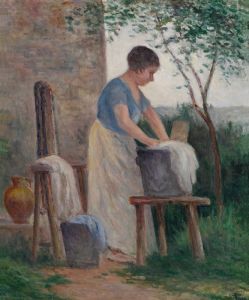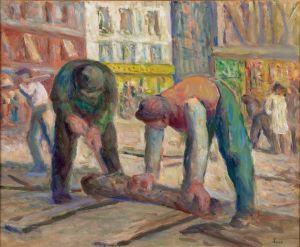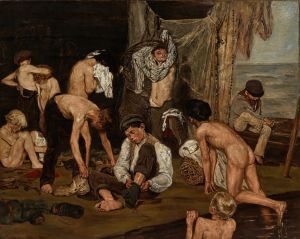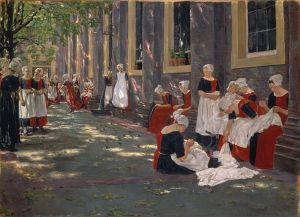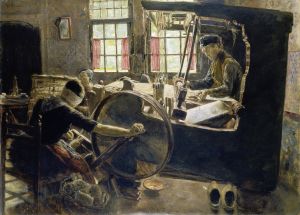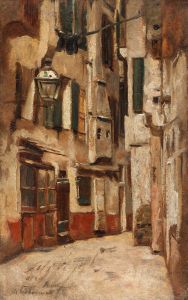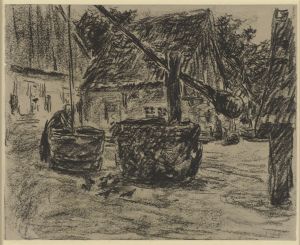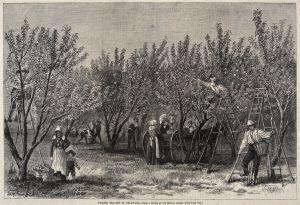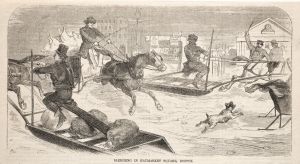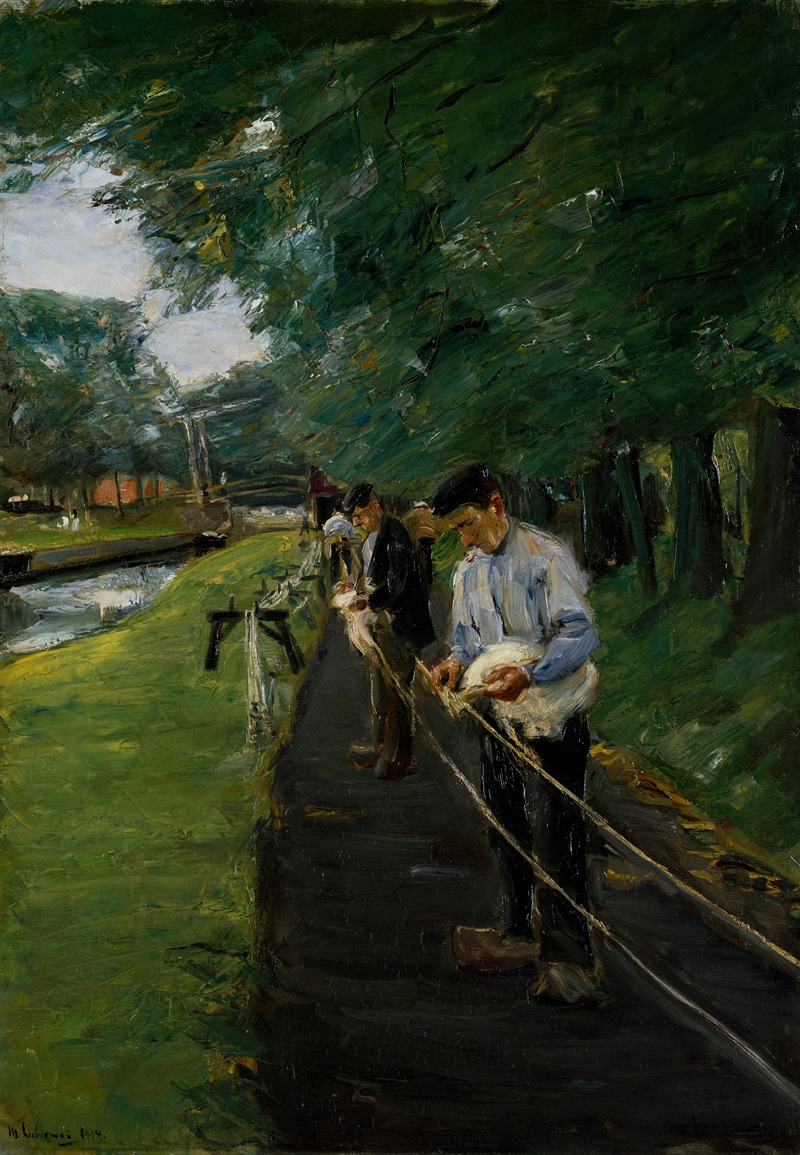
The Ropewalk in Edam
A hand-painted replica of Max Liebermann’s masterpiece The Ropewalk in Edam, meticulously crafted by professional artists to capture the true essence of the original. Each piece is created with museum-quality canvas and rare mineral pigments, carefully painted by experienced artists with delicate brushstrokes and rich, layered colors to perfectly recreate the texture of the original artwork. Unlike machine-printed reproductions, this hand-painted version brings the painting to life, infused with the artist’s emotions and skill in every stroke. Whether for personal collection or home decoration, it instantly elevates the artistic atmosphere of any space.
Max Liebermann's painting The Ropewalk in Edam is a notable work by the German Impressionist painter, created during his travels in the Netherlands. Liebermann, one of the leading figures of German Impressionism, was known for his depictions of everyday life, often focusing on rural and working-class subjects. This particular painting reflects his interest in capturing the simplicity and authenticity of labor and nature.
The artwork portrays a ropewalk, a long, narrow space used for the production of rope, located in the town of Edam in the Netherlands. Edam, famous for its cheese, also had a history of maritime activity, which likely influenced Liebermann's choice of subject. The painting features workers engaged in the rope-making process, set against a serene, tree-lined path. Liebermann's characteristic loose brushwork and muted color palette are evident in this piece, emphasizing the natural light and atmosphere of the scene.
Liebermann visited the Netherlands frequently during the late 19th and early 20th centuries, drawn to the country's landscapes and its people. The Dutch countryside and its traditions provided him with inspiration for many of his works. His time in the Netherlands allowed him to study the techniques of Dutch Golden Age painters, such as Rembrandt and Frans Hals, whose influence can be seen in his use of light and composition.
The Ropewalk in Edam exemplifies Liebermann's ability to depict the dignity of labor and the harmony between humans and their environment. The painting avoids romanticizing its subject, instead presenting a realistic and respectful portrayal of the workers and their craft. This approach aligns with Liebermann's broader artistic philosophy, which sought to find beauty in the ordinary and the everyday.
The painting is part of Liebermann's larger body of work that documents his travels and observations. It is considered an important example of his engagement with Impressionist techniques and his focus on capturing the essence of a moment. As of now, the exact location of the painting may vary, as it could be held in a private collection or a museum. Liebermann's works are widely appreciated and can be found in major art institutions around the world.
This painting remains a testament to Liebermann's skill as an artist and his ability to find inspiration in the quiet, industrious scenes of life. It continues to be studied and admired for its artistic and historical significance.





